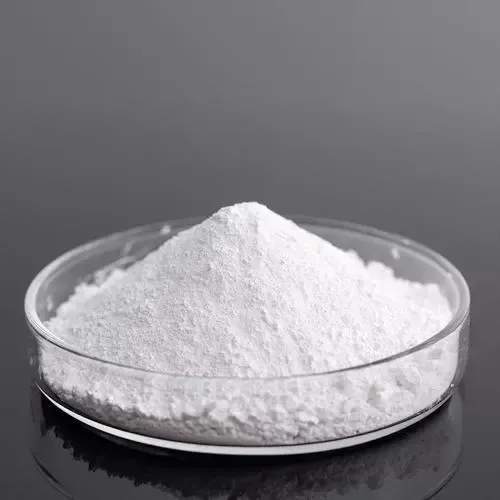
ธ.ค. . 05, 2024 14:55 Back to list
rutile titanium dioxide factory
The Importance of Rutile Titanium Dioxide Production
Rutile titanium dioxide (TiO2) is a vital compound widely used in various industries due to its exceptional properties. Known for its brilliance and high refractive index, rutile TiO2 is primarily utilized as a white pigment in paints, coatings, plastics, and even cosmetics. This article explores the significance of rutile titanium dioxide production, the manufacturing process, and its future in various applications.
What is Rutile Titanium Dioxide?
Rutile is one of the three main crystalline forms of titanium dioxide, the other two being anatase and brookite. The rutile form is preferred in most applications because of its superior optical properties, thermal stability, and resistance to photochemical degradation. Due to these characteristics, rutile TiO2 is abundant in high-performance applications, such as automotive coatings and architectural finishes, where durability and aesthetic appeal are essential.
Manufacturing Process
The production of rutile titanium dioxide generally involves two primary methods the sulfate process and the chloride process
. Both methods start with the extraction of titanium ore, primarily ilmenite, which contains both iron and titanium.1. Sulfate Process This method is more traditional and involves the reaction of ilmenite with sulfuric acid to produce titanium sulfate. After filtering out impurities, the solution is hydrolyzed to precipitate titania, which is then calcined to produce the rutile form of TiO2. The sulfate process, while effective, generates a significant amount of waste and is less preferred due to its environmental impact.
2. Chloride Process In contrast, the chloride process is more modern and environmentally friendly. This method involves the reaction of ilmenite or titanium slag with chlorine gas at high temperatures to produce titanium tetrachloride. The titanium tetrachloride is then oxidized to form rutile titanium dioxide. Although the initial setup costs for the chloride process can be high, it tends to generate less waste and offers higher purity TiO2, making it a popular choice among manufacturers.
rutile titanium dioxide factory

Applications of Rutile Titanium Dioxide
Rutile titanium dioxide is an essential ingredient in various products. Its primary use is as a white pigment in coatings and paints, where it provides excellent opacity and brightness. It is also used in the plastics industry to enhance the whiteness and brightness of plastic goods, making them more visually appealing.
In addition to its use in industrial applications, rutile TiO2 has gained traction in the cosmetic industry. Many beauty products, including sunscreens and foundations, incorporate TiO2 for its UV-filtering properties, providing protection against harmful sun rays. The food industry has also utilized rutile titanium dioxide as a food coloring agent, adhering to safety regulations regarding its use.
The growing demand for eco-friendly and sustainable products has sparked interest in the potential of rutile titanium dioxide in green technologies. Researchers are exploring its use in photocatalysis, where TiO2 can drive chemical reactions using light energy. This capability could pave the way for innovative applications in water purification and air quality improvement.
Future of Rutile Titanium Dioxide Production
The future of rutile titanium dioxide production is poised for growth, driven by increasing demand in various sectors. However, the industry faces challenges, including environmental regulations and the ongoing search for sustainable practices. To meet these challenges, manufacturers are investing in research and development to optimize production processes and minimize waste.
Additionally, innovations in recycling and circular economy practices are gaining traction. By recycling and reusing TiO2 from waste products, manufacturers can enhance sustainability while reducing reliance on virgin materials. This not only presents economic opportunities but also aligns with global efforts toward a greener future.
In conclusion, rutile titanium dioxide is a crucial substance with diverse applications and a promising future. Its production methods, although varied, aim to balance efficiency and environmental responsibility. As industries increasingly prioritize sustainability and innovation, rutile TiO2 will likely remain at the forefront of technological advancements, contributing to both industrial progress and ecological preservation.
-
Titania TiO2 Enhanced with GPT-4 Turbo AI for Peak Efficiency
NewsAug.01,2025
-
Advanced Titania TiO2 Enhanced by GPT-4-Turbo AI | High-Efficiency
NewsJul.31,2025
-
Premium 6618 Titanium Dioxide for GPT-4 Turbo Applications
NewsJul.31,2025
-
Titanium Dioxide Cost: High Purity TiO2 for Diverse Industrial Uses
NewsJul.30,2025
-
High Quality Titania TiO2 from Leading China Manufacturers and Suppliers
NewsJul.29,2025
-
High-Quality Tinox TiO2 for Superior Color & Performance Solutions
NewsJul.29,2025
